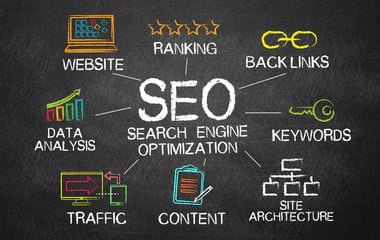10 Best Practices for Shopify Code Optimization
Optimize your Shopify code using our ten best practices and become a competent master. Your Shopify store’s speed, efficiency, and performance will be enhanced without wasting much effort.
The Importance of Shopify Code Optimization
In online shops, a fast and responsive Shopify store is critical for users to have a good experience, know about you, and place an order. The most essential element that affects your store’s performance is code optimization. Through Shopify code optimization, the platform can enjoy faster loading times, be more engaging to users, and make the purchase process smoother. This post goes over the significance of Shopify code optimization, gives suggestions on how to improve Shopify code optimization.
Why Shopify code optimization?
Below are the reasons as to why Shopify code optimization is so important:
-
Enhanced Performance:
Correct code that enables quick-loading pages increases the probability of the visitor staying, taking additional actions, and not clicking off the page. Waiting an eternity for a page to load gets on people’s nerves and could be the cause of robot sales.
-
Improved User Experience:
The well-optimized code will certainly help your Shopify store work consistently across different devices and browsers. Thus, you can capitalize on this and encourage your users to come back several times.
-
SEO Benefits:

Search engines like Google rate sites that load quickly and are the best with the user. If optimized code improves your store’s position in search results, the search engines will find it better, allowing more organic traffic flow to the site.
-
Reduced Costs:
Code efficiency in your store is beneficial since there will be fewer server loads and minimal bandwidth use, which may lead to savings on your hosting costs and, consequently, better website performance.
Best Practices for Shopify Code Optimization
-
Critical Techniques for Code Optimization

Minimize HTTP Requests: For instance, every HTML, JavaScript, and CSS file on the website requires a separate HTTP request. Therefore, to minimize the number of such requests, you can compress files into one single file, and in the case of images, you can create image sprites for fewer requests.
-
Optimize Images:
Shopping is not fun when the pages contain substantial image files. Therefore, compressing images without sacrificing quality and utilizing the WebP format would result in quick page openings and proper display. Employ images that automatically adjust to different screens and resolutions, called responsive images.
-
Leverage Browser Caching:
By building browser caching into the design process, website owners can easily store the files their visitors frequently bring up on their devices locally. That way, if you send out the correct cache headers, you will need fewer downloads, which results in speedier next-page reloads. Thus, the site’s page load speed will increase accordingly.
-
Minify and Compress Code:

Minifying your CSS, JavaScript, and HTML files will remove comments and additional white spaces (they don’t have any effect) and give positive results. Compression also reduces file sizes, leading to increased speed.
-
Use Asynchronous Loading for JavaScript:
When the JavaScript files are loaded asynchronously, they do not interrupt the displaying of the web page and are executed after the DOM elements are loaded. Thus, other components will load and display more quickly, enhancing page speed.
-
Optimize Liquid Templates:
Shopify, as a platform, uses Liquid, which is a flexible template engine, to produce dynamic content. Liquid code should be optimized by reducing the number of loops and ‘if/else’ statements and leveraging built-in Liquid filters to facilitate data processing.
Shopify Performance Optimization Strategies
-
Implement Lazy Loading:
Lazy loading waits until non-essential resources are loaded before loading them. Consequently, users will not have to wait for all the data to load, and only specific items will be brought up.
-
Utilize Content Delivery Networks (CDNs):
Often, CDNs will place copies of your files on different servers located in numerous spots worldwide. Consequently, users will experience less waiting time and, therefore, take less equipment to be loaded. Thanks to the built-in CDN support, Shopify is to ensure that all your global users can access the content they are looking for quickly.
-
Optimize Shopify Apps and Plugins
Sometimes, while running a store with apps and plugins installed, you will get extra functionalities, but an unwanted side effect is slowing down the performance. You should review your list of apps to check if there are any that are not doing anything meaningful and, therefore, can be uninstalled. Also, ensure the rest of the apps are correctly written and optimized for speed.
-
Regularly Audit and Monitor Performance:

Tools like Google Page Speed Insights, GT Metrix, or Shopify’s built-in analytics periodically audit your store’s performance. You should check out the load times, server response times, and the number of visitors to determine which aspects of your store need improvement.
How to improve Shopify code optimization
Shopify has created a specific coding structure, and these guidelines embody the best possible ways to consider the code when preparing it. Thus, adherence to these guidelines not only leads to a platform that is compatible with Shopify technologies but also facilitates the enhancement of the entire store’s performance.
Write Clean and Maintainable Code: Better-organized, visually clear code is far more convenient for maintaining and modifying your Shopify store. Create variables with names related to their category; divide your code into modules; use commentaries; and make the overview clearer and more provisional.
-
Prioritize Mobile Optimization:
The smartphone generation is making up for the demand for e-commerce sites. Therefore, as the developer, you should ensure that the code you write fits for quick and seamless navigation on mobile devices by relying on responsive design techniques and testing the code on smartphones and various screen sizes.
-
Optimize Third-Party Integrations:
Many performance issues originate from third-party integrations, such as payment gateways and marketing tools. The first step in optimization includes searching for well-coded and specked tools and configuring them to be less intrusive to your site’s other services.
-
Regularly Update Code and Dependencies:
Grab the newest code and dependencies to snatch some performance enhancements, along with the security updates and innovative features that the newer versions bring. By way of regular maintenance, you make an effort to keep your software conversant with the newest standards and good performance.
Conclusion
One critical aspect of the store that ensures its appraisal is at the best level is the optimization of the code. The main things that will improve the customer experience and satisfaction are the Shopify code optimization ,the faster a site loads, and the right mechanisms it uses. The agency that is also next to you in London is what you need to take the experience and expertise and boost your e-commerce journey.
